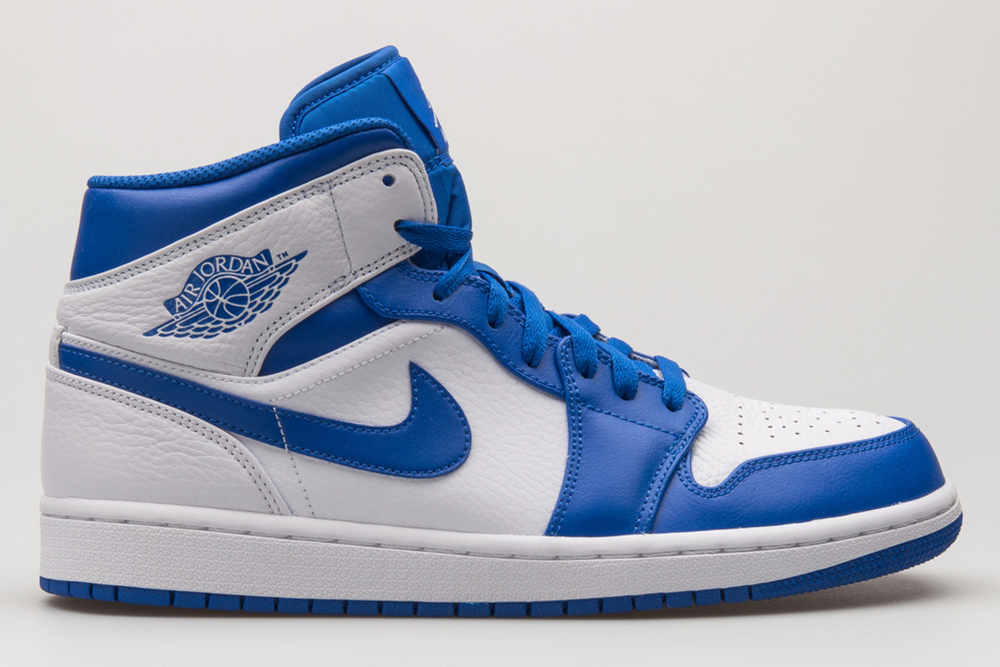
Jordan 12 fake vs. real sneakers are a major concern for sneakerheads and fashion enthusiasts alike. With the rise of counterfeit sneakers flooding the market, it's become more challenging for buyers to spot fakes.
No matter if you're a first-time buyer or a seasoned collector, understanding how to tell if your Jordan 12 is real or fake can save you from losing money on a pair of poorly made, counterfeit sneakers.
In this article, we’ll go over the key features to examine to tell if your Jordan 12 is authentic or fake.
The Importance of Identifying Fake Jordans
Counterfeit Jordans are, unfortunately, widespread in the sneaker world. As one of Nike's most iconic models, the Jordan 12 is frequently targeted by counterfeit manufacturers. Fake Jordans not only look cheap but are often made from low-quality materials that compromise comfort and durability.
For sneakerheads who value the culture and authenticity of these shoes, buying counterfeit products can diminish the overall experience and damage the reputation of the sneaker community.
Identifying fake Jordans is not just about protecting your investment. It’s about maintaining the integrity of sneaker culture and making sure you only wear authentic, high-quality footwear.
Visual Inspection - First Signs of a Fake Jordan 12
- Quality of Materials
One of the first things to check when you receive your Jordan 12 is the quality of the materials used. Authentic Jordans are crafted with premium leather, sturdy suede, and durable rubber.
The leather used in real Jordan 12s feels soft and smooth to the touch. Meanwhile, fake ones often use synthetic materials that can feel stiff or even plasticky. The texture of the leather can also be inconsistent, with fake pairs having visible creases or wrinkles that don’t align with the natural grain of the leather.
Additionally, the suede on real Jordan 12s has a rich, velvety texture, which fake pairs often lack. If you run your fingers across the suede on a fake pair, you may notice it doesn’t have the same soft feel or subtle texture shifts.
- The Shape and Structure
Another major difference between real and fake Jordan 12s is their shape. Genuine Jordan 12s are known for their clean, precise structure with no irregularities in the shape of the shoe.
Fake versions, on the other hand, can often have slight misalignments, especially in the toe box or heel area. Real Jordan 12s have a well-defined, symmetrical form. On the other hand, fake pairs may show signs of poor craftsmanship with lopsided stitching or uneven curves.
Key Details to Examine - Fake vs. Real Jordan 12
- The Jumpman Logo
The Jumpman logo is one of the most iconic features on the Jordan 12. When examining your sneakers, pay attention to the stitching and positioning of the Jumpman.
In authentic Jordan 12s, the Jumpman logo is embroidered with high-quality thread and features a clean, consistent design. The stitching around the logo is tight, straight, and uniform, with no loose threads or irregularities.
In contrast, fake Jordan 12s often have a poorly stitched Jumpman logo, with visible gaps in the stitching or uneven thread quality. The positioning of the logo may also be slightly off-center or incorrectly sized. Additionally, the shape of the Jumpman on a fake pair may appear distorted or uneven.
- The Sole Design
The sole design of the Jordan 12 is another telltale sign of authenticity. On real Jordan 12s, the sole features a well-defined tread pattern made from high-quality rubber. The pattern should be crisp and consistent across the entire sole, with no areas that look uneven or poorly molded.
Fake Jordan 12s often use cheaper rubber that wears down quickly and shows signs of deterioration. The tread pattern may also differ slightly from the authentic design, either in terms of shape, size, or overall structure. Fake soles may not have the same texture or grip. This makes them feel slippery and less durable than the real ones.
- Stitching Quality
The stitching on a real Jordan 12 is tight, clean, and consistent. Each stitch should be evenly spaced and should not show any loose threads.
Authentic Jordans have a distinct, almost flawless stitching pattern that runs along the edges, seams, and around the tongue. If you inspect the stitching closely, you’ll find it’s neat and precise with no visible errors.
However, fake Jordan 12s often have sloppy stitching. You may notice uneven stitching, loose threads, or stitches that are too far apart. Furthermore, the stitching color on fake Jordans may differ slightly from the authentic model. Authentic Jordans feature very specific colors for stitching, which are hard to replicate.
- Tongue Design and Lining
The tongue of a real Jordan 12 is not only structured to match the iconic design of the shoe. However, it also features a high-quality lining that gives it a soft and sturdy feel. If you look closely at the lining of the tongue on a fake pair, you might notice a rough texture, a cheap material, or a poorly constructed seam.
Moreover, the Jordan 12 logo on the tongue should be sharp and well-printed. Fake pairs often feature a blurred or pixelated logo, which can be a dead giveaway.
- Weight Comparison
Another quick way to spot a fake Jordan 12 is by weighing the sneaker. Real Jordan 12s are made with premium materials. For this reason, they tend to feel a bit heavier compared to counterfeits.
Fakes, made with lower-quality materials, are often lighter. If you have the chance to compare a pair of real Jordans with a suspected fake, you might notice a noticeable difference in weight.
- Insole Quality
Authentic Jordan 12s come with a cushioned, high-quality insole that provides support and comfort. The insole often features the Nike Air logo, which is crisply printed and aligned correctly.
Fake Jordans typically use cheap and thin insoles that lack the same level of comfort. If you can, remove the insole and compare it with an authentic pair to see if it feels soft and supportive or thin and uncomfortable.
- Check for Color Differences
One of the most obvious signs of a fake Jordan 12 is the color discrepancy. Counterfeit sneakers often use off-color materials or have shades that don’t exactly match the official release. Authentic Jordan 12s have precise and vibrant color schemes that match the official design.
Fake versions often use colors that are slightly off. Therefore, if you notice any minor differences in shade, it could be a sign that your pair is not authentic.
How to Authenticate Your Jordan 12 with Serial Numbers
A common concern among sneaker enthusiasts is the Jordan 12 fake vs. real debate. As a highly sought-after sneaker, it's essential to make sure you're getting the real deal. One of the most reliable ways to verify the authenticity of your Jordan 12 is by checking the serial numbers.
- Checking the Serial Code
One of the most reliable ways to authenticate your Jordan 12 is by checking the serial number. Authentic Jordan 12s will have a unique serial number printed inside the tongue area, along with a corresponding code inside the box.
To verify the serial number, visit Nike's official website or use other online authentication tools to compare the code with their database.
Fake Jordan 12s often have serial numbers that don’t match or appear to be poorly stamped. If the code looks smudged or the font is off, it could be a sign of a counterfeit. When in doubt, cross-reference the serial number with known databases or even ask a trusted sneaker expert for their opinion.
- The Box – Not Just for Packaging
Don’t forget to inspect the packaging when you receive your Jordan 12s. The box for real Jordan 12s is sturdy and well-designed, with clear and crisp print. The colors of the box should be vibrant, and the logo should be accurately positioned. Authentic Jordan boxes also feature a high-quality finish, with no peeling or fading in the print.
On the other hand, fake Jordan 12s often come in flimsy, poorly designed boxes. The print on the box may be blurry or misaligned, and the colors could appear faded or inconsistent.
Additionally, counterfeit boxes are often made from cheaper materials that feel flimsy or lightweight. If the box seems off, it could be a sign that the sneakers inside are fake as well.
Stay Safe and Buy Authentic Jordan 12s
Distinguishing between a real and fake pair of Jordan 12s requires careful attention to detail. With a focus on materials, stitching, logos, serial numbers, and packaging, you can spot the fakes and guarantee you’re purchasing authentic Jordans. Buying real Jordan 12s makes sure you’re getting high-quality sneakers that will last for years to come while supporting the sneaker culture you love.
illCurrency knows the importance of authenticity and self-expression. We offer exclusive, custom-designed t-shirts, hoodies, and sweatshirts that perfectly match Jordans and the latest sneaker releases. Express your individuality and stay on trend with our unique collection, designed with sneakerheads like you in mind.



